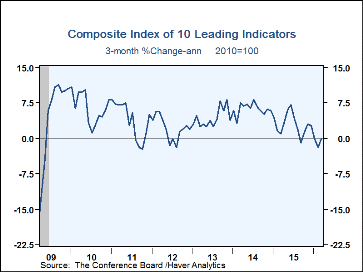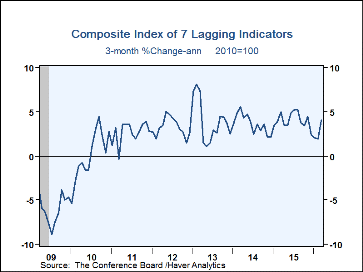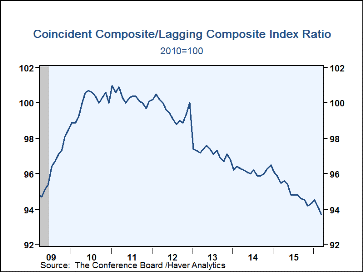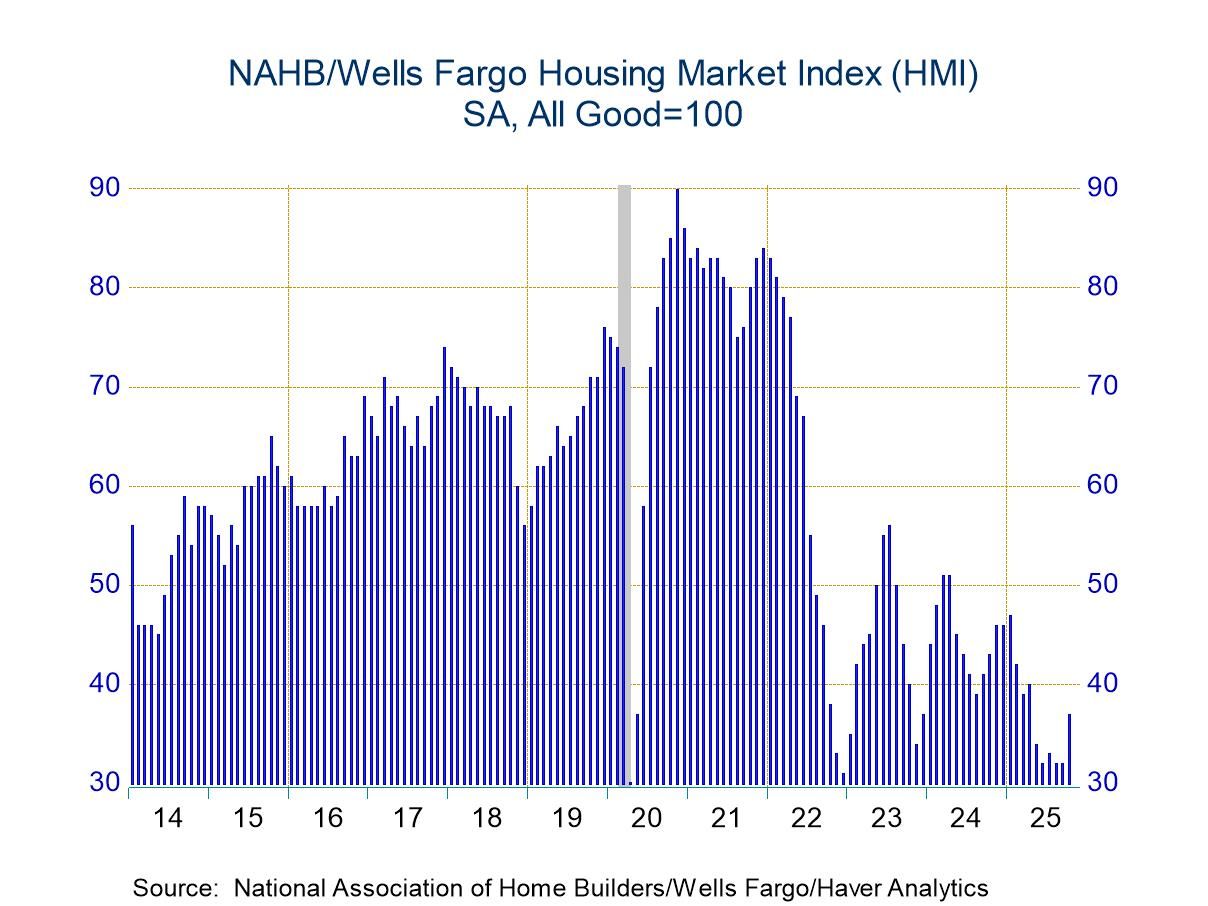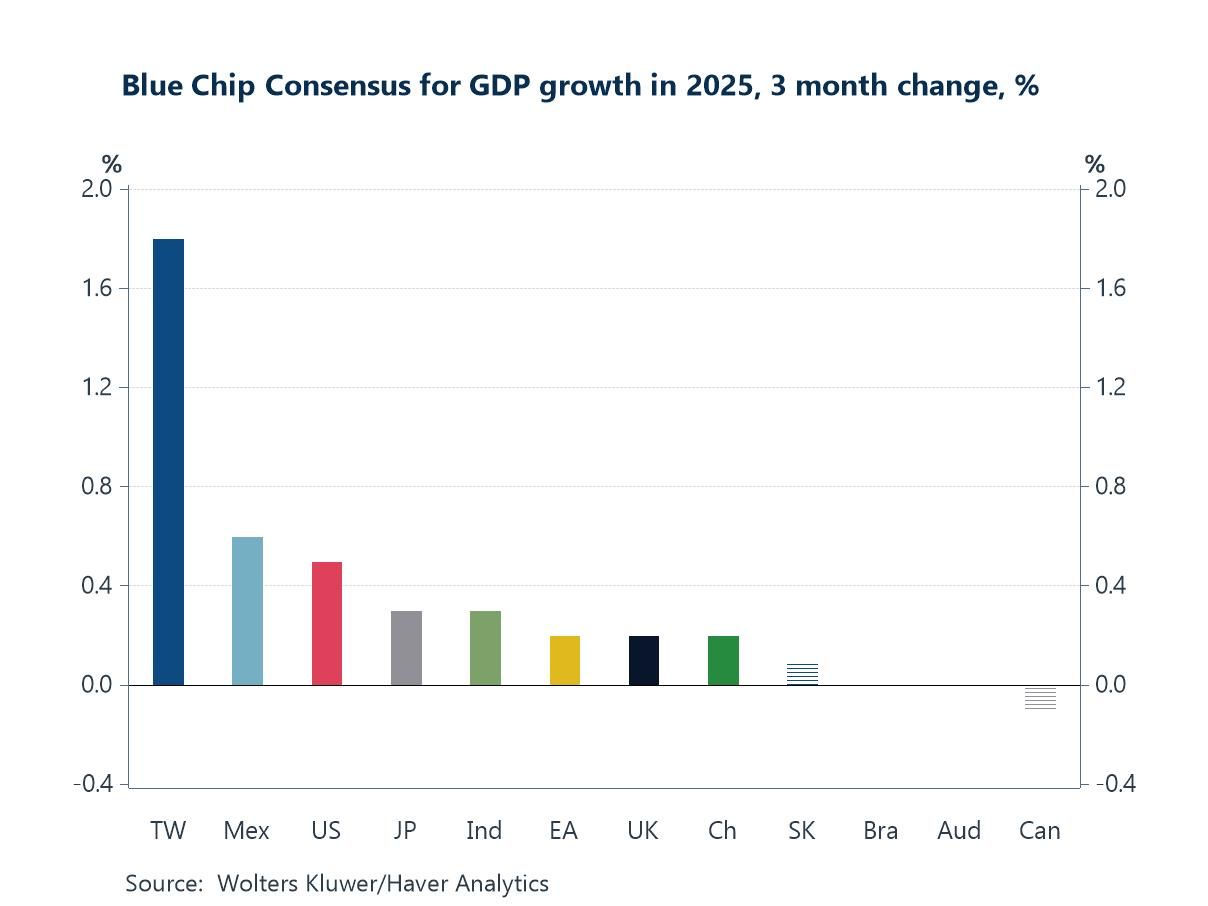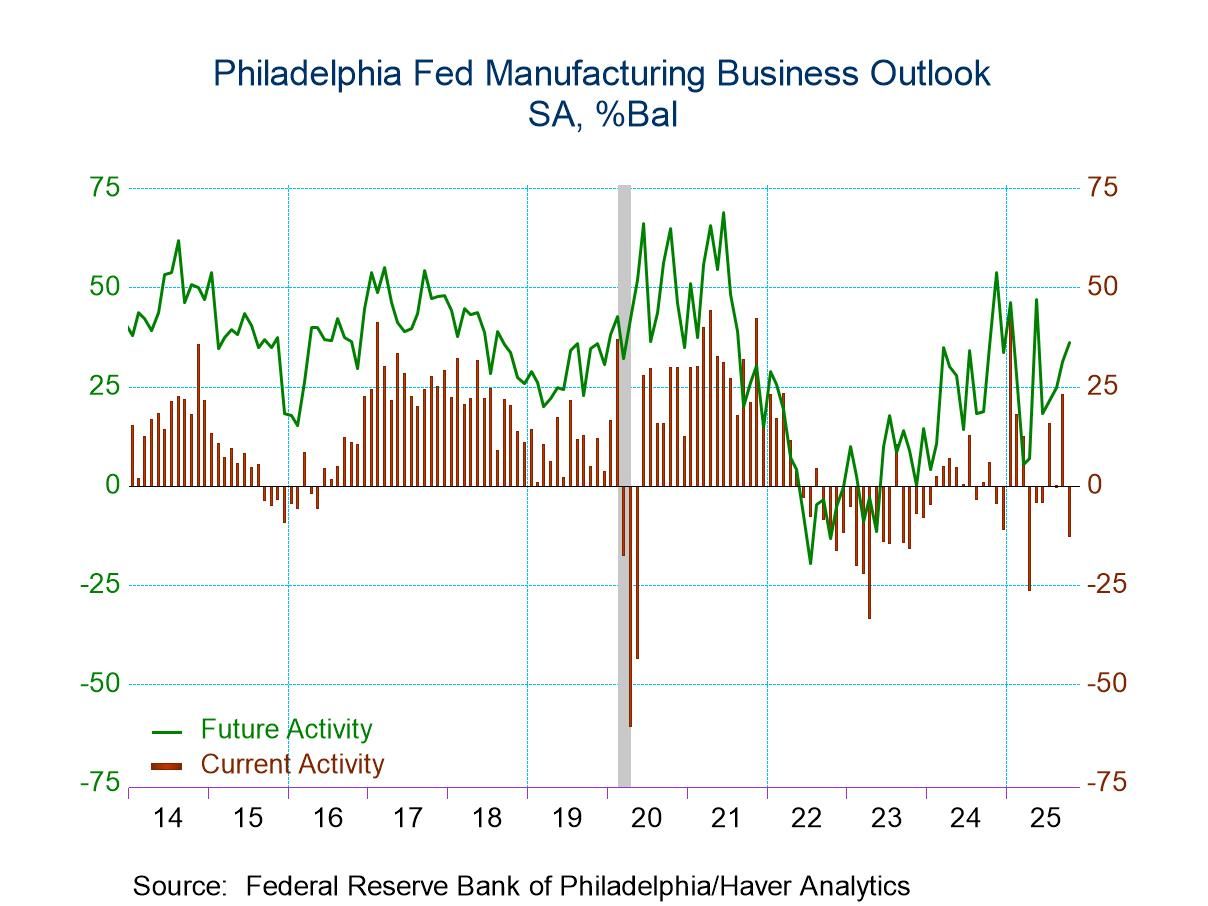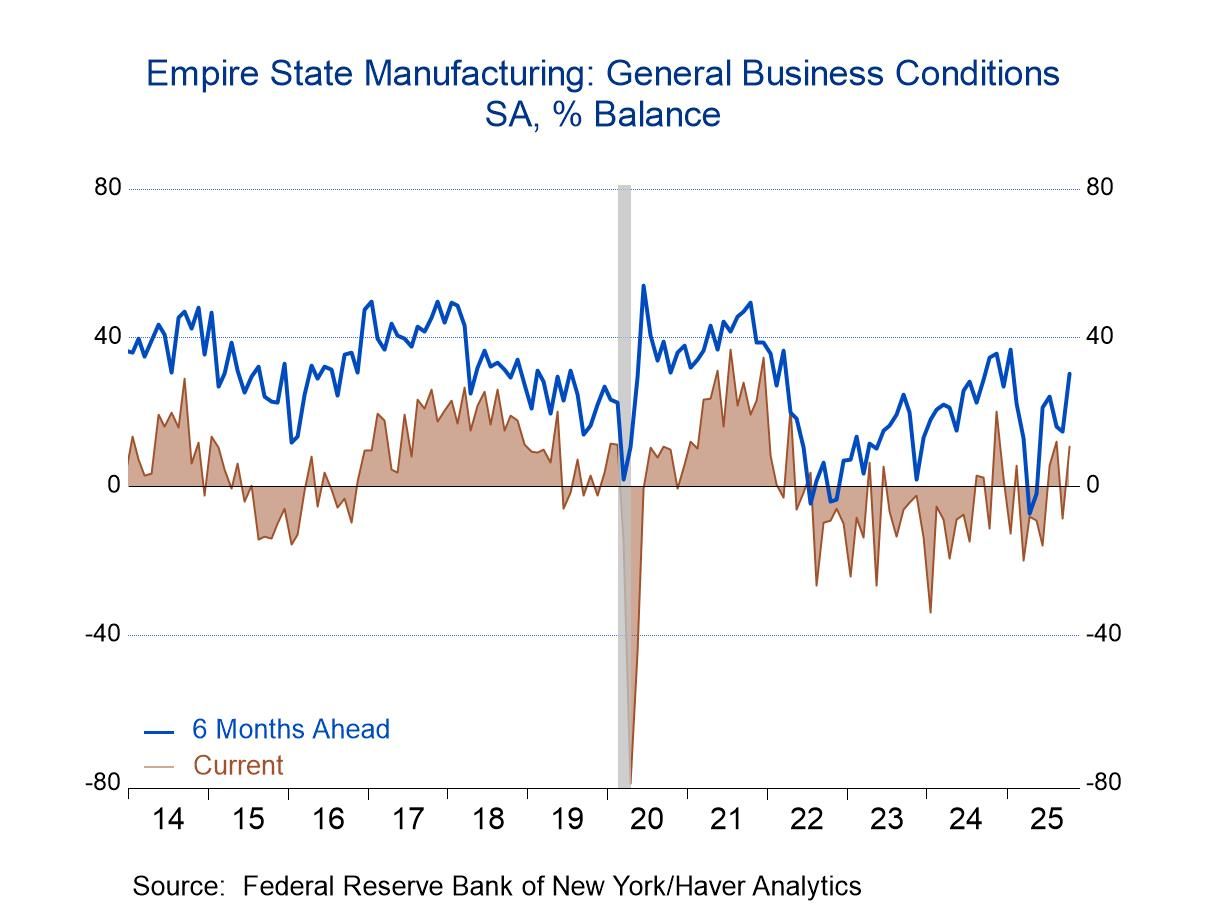 Global| Apr 21 2016
Global| Apr 21 2016U.S. Index of Leading Indicators Increases
by:Tom Moeller
|in:Economy in Brief
Summary
The Conference Board's Index of Leading Economic Indicators increased 0.2% during March (2.2% y/y), following declines in each of the prior three months. February's 0.1% shortfall was revised from a 0.1% gain. The latest improvement [...]
The Conference Board's Index of Leading Economic Indicators increased 0.2% during March (2.2% y/y), following declines in each of the prior three months. February's 0.1% shortfall was revised from a 0.1% gain. The latest improvement fell short of expectations in the Action Economics Forecast Survey for a 0.3% rise. The three-month change in the index improved to zero, up from -1.9% in February. Fewer building permits and more initial unemployment insurance claims had negative effects on the overall leading index. These influences were offset by higher stock prices, a steeper interest rate yield curve and an improved ISM new orders diffusion index.
The coincident index remained unchanged (1.8% y/y) after an unrevised 0.1% February rise. It was the weakest monthly performance since May. Three-month growth eased to 1.4% (AR), its least since December. Nonfarm payrolls, personal income less transfers and manufacturing & trade sales contributed positively to last month's index, but industrial production fell for the fifth month in six.
The lagging index increased 0.4% (3.8% y/y) after a 0.5% rise, revised from 0.4%. Three-month growth increased to 4.1%, its strongest since November. More C&I loans, a longer duration of unemployment and a higher consumer installment debt/personal income ratio contributed positively to the index rise last month. A weaker gain in the services CPI detracted from the overall index increase.
The ratio of coincident-to-lagging indicators also is a leading indicator of economic activity. It measures excesses in the economy relative to its ongoing performance. This ratio declined to the lowest level of the economic expansion.
The Conference Board figures are available in Haver's BCI database; the components are available there, and most are also in USECON. The forecast figures for the Consensus are in the AS1REPNA database. Visit the Conference Board's site for coverage of leading indicator series from around the world.
| Business Cycle Indicators (%) | Mar | Feb | Jan | Mar Y/Y | 2015 | 2014 | 2013 |
|---|---|---|---|---|---|---|---|
| Leading | 0.2 | -0.1 | -0.2 | 2.2 | 4.3 | 5.8 | 2.9 |
| Coincident | 0.0 | 0.1 | 0.3 | 1.8 | 2.5 | 2.6 | 1.4 |
| Lagging | 0.4 | 0.5 | 0.1 | 3.8 | 3.7 | 3.7 | 3.9 |
Tom Moeller
AuthorMore in Author Profile »Prior to joining Haver Analytics in 2000, Mr. Moeller worked as the Economist at Chancellor Capital Management from 1985 to 1999. There, he developed comprehensive economic forecasts and interpreted economic data for equity and fixed income portfolio managers. Also at Chancellor, Mr. Moeller worked as an equity analyst and was responsible for researching and rating companies in the economically sensitive automobile and housing industries for investment in Chancellor’s equity portfolio. Prior to joining Chancellor, Mr. Moeller was an Economist at Citibank from 1979 to 1984. He also analyzed pricing behavior in the metals industry for the Council on Wage and Price Stability in Washington, D.C. In 1999, Mr. Moeller received the award for most accurate forecast from the Forecasters' Club of New York. From 1990 to 1992 he was President of the New York Association for Business Economists. Mr. Moeller earned an M.B.A. in Finance from Fordham University, where he graduated in 1987. He holds a Bachelor of Arts in Economics from George Washington University.


